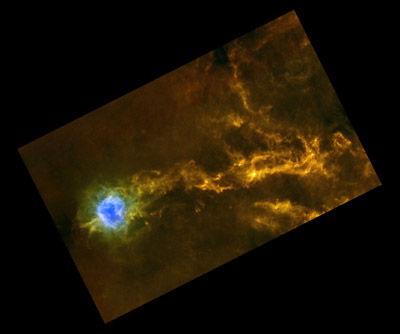
Dense filaments of gas in IC5146
13 April 2011
ESAs Herschel space observatory has revealed that nearby interstellar clouds contain networks of tangled gaseous filaments. Intriguingly, each filament is approximately the same width, hinting that they may result from interstellar sonic booms throughout our Galaxy.
The filaments are huge, stretching for tens of light years through space and Herschel has shown that newly-born stars are often found in the densest parts of them. One filament imaged by Herschel in the Aquila region contains a cluster of about 100 infant stars.
Such filaments in interstellar clouds have been glimpsed before by other infrared satellites, but they have never been seen clearly enough to have their widths measured. Now, Herschel has shown that, regardless of the length or density of a filament, the width is always roughly the same.

The Polaris filament network
This is a very big surprise, says Doris Arzoumanian, Laboratoire AIM Paris-Saclay, CEA/IRFU, the lead author on the paper describing this work. Together with Philippe André from the same institute and other colleagues, she analysed 90 filaments and found they were all about 0.3 light years across, or about 20 000 times the distance of Earth from the Sun. This consistency of the widths demands an explanation
more
http://www.esa.int/esaCP/SEMQVH7S9MG_index_0.html